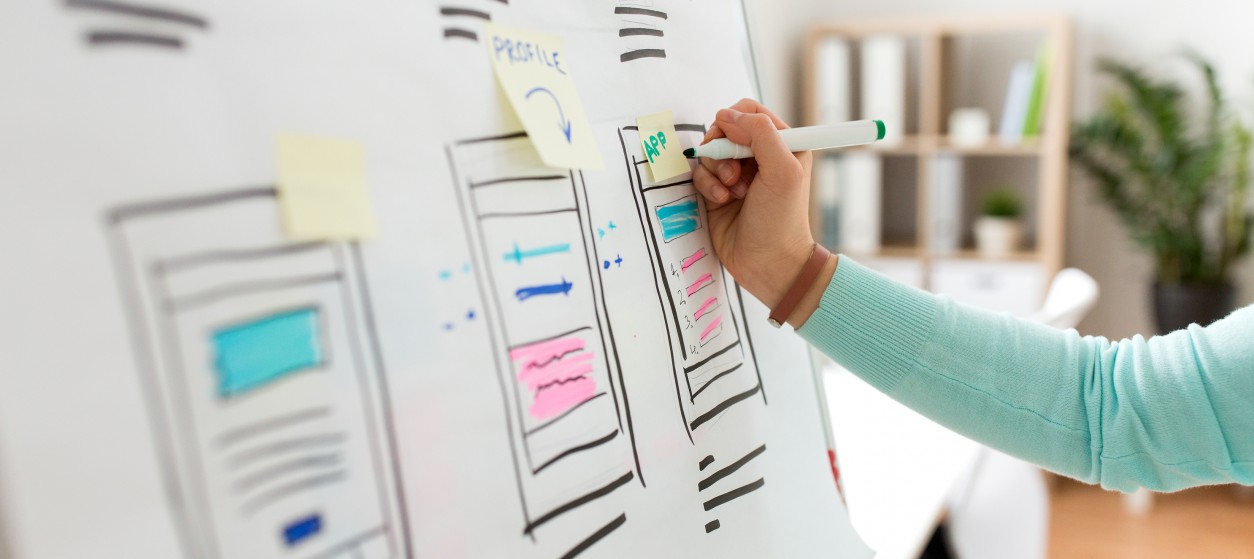User experience and user interfaces are without doubt two of the most critical elements of modern IT systems as they have a major impact on their overall acceptability. Designing exceptional user experiences (UX) and user interfaces (UI) is as much an art much as it is science. Moreover, the acceptance of a user interface by an end-user can be very subjective. A user interface that is highly appreciated by one user might be uninteresting or unacceptable for another. The designer’s experience and expertise could alleviate this subjectivity but it cannot completely eliminate it. There are still many cases where designers consider a UI/UX result as excellent yet at the same time, end-users perceive it as poor or problematic. Therefore, UX/UI experts are increasingly seeking ways for collecting and evaluating users’ feedback and opinions on UI/UX elements as a means of bridging the experts and users’ perceptions and subsequently relaxing any risks of non-acceptance. For this purpose, data-driven approach to designing user interfaces and user experiences have emerged and are nowadays used extensively.
Data-Driven Approaches to UI/UX Design emphasize the regular collection of users’ feedback about alternative UI/UX options (e.g., design concepts, menu items, interface elements, user interfaces’ layouts) as a means of alleviating uncertainty about users’ subjective opinions and ending up with acceptable designs. Moreover, data-driven approaches tend to collect information about users’ preferences early on, as a means of properly bootstrapping the design process, through profiling the target users and proposing designs that are viable for them.
Drivers of Data Driven Design
Data-driven design is supported by a wide range of different and in several cases complementary methods. In order to select the proper methods, it’s important to understand what is driving the need for data-driven design processes:
- Users do not really know what they want: In most cases, users are unable to express what they really want, unless they first see a sample of possible designs. This is due to a number of factors, such as the fact that they lack the knowledge and experience needed to contemplate possible designs for their application at hand. Furthermore, in many cases, they do not have insights on new technologies and their possibilities. As a remedy, data-driven methods balance between technology push and user demands towards facilitating the design of acceptable interfaces and experiences. This balance takes into account novel technologies, including technologies that end-users are not familiar with.
- User Profiles: Users’ characteristics and demographics such as education, age, professional background, computer literacy and gender affect the appropriateness and acceptance of a UI/UX Design. Hence, there is a need for collecting and analyzing data from the targeted user groups as a means of building proper profiles.
- Alternative designs are preferred by different users or user segments: It not likely that all users have the same opinion about a given design. Therefore, designers need to systematically collect real data about what’s most acceptable by the vast majority of users, rather than relying on sporadic opinions of few users.
- UX/UI have multiple dimensions: There are several parameters that affect the acceptance of a certain UI/UX such as aesthetics, ease of use, ease of navigation, ergonomics, as well as how motivating an interface is. Designers need to employ methods that help them collect data and evaluate all of the above dimensions.
Data Driven Design Methods
Different methods can be used in order to collect and analyze data from end users including:
- Questionnaires: Users are provided with questionnaires, which guide them in providing information and preferences that affect the UX/UI Design and operation. Relevant information includes the users’ literacy, the types of mobile devices that they use, as well as other parameters related user interface preferences such as menus, colors and navigation preferences.
- Interviews: This data collection modality is based on the face to face interactions between end-users and UI/UX designers. Face to face interactions provide the means for receiving unstructured and spontaneous feedback based on more personalized interactions. They may also include discussion of details and viewpoints beyond what can be written in a questionnaire.
- Focus Groups: Focus groups bring together individuals who belong to the target end-user’s population. They enable more systematic and in-depth discussions between designers and the group’s participants, including interactions between members of the group. They have to be organized around the type of information that the designers strive to collect. They may include the presentation of UI options to the participants as a means of stimulating the discussion and disambiguating information regarding the scope and use of the application at hand.
- Co-Creation (Workshops): Co-creation workshops enable stakeholders’ collaboration on application design and functionalities’ specifications, including UI/UX Design issues. Such workshops are one of the main elements of a co-creation process, which emphasizes collaboration as a means of reaching a common understanding among all stakeholders regarding the scope and features of innovative applications. As such they are typically used in the scope of open innovation processes where novel features have to be provided (e.g., AI (Artificial Intelligence), IoT (Internet of Things) and Smart Cities applications) rather than in the scope of conventional systems like websites and transactional applications. The chief difference between co-creation workshops and focus groups is that the former tends to gather all stakeholders of a project or product (e.g., project sponsors, end users, developers, designers, project managers) rather than end-users only.
All of the above data collection methods require proper sampling and recruitment of the target participants. Data collection should be always balanced in terms of socioeconomic factors that affect user experiences such as gender, age, and profession. Nevertheless, the sampling should always refer to the target group of the application, which puts additional constraints on the sampling process.
A/B Testing
One of the most popular mechanisms for data-driven UI/UX Design is A/B testing of alternative user interfaces or experiences. In principle, A/B testing refers to the comparative evaluation of an alternative solution (i.e. the B option) against an already implemented option (i.e. the A option). In the case of UX/UI Design, A/B testing can be used to evaluate alternative designs. In particular, two appropriately sampled user groups are engaged in the comparative testing and evaluation of alternative user interface and interaction mechanisms. The two groups engage in the practical use of the application for a specified period of time, for which data are collected and analyzed. The type of data to be collected and used is driven by the target business goals. They could include information on actual sales, data about the speed of navigation as well as engagement data.
Overall, A/B testing is a data-intensive evaluation methodology, which relies on pragmatic data rather than on risky and sometimes subjective assumptions. A/B testing is structured as a four-step process, including (i) Engaging users and collecting data; (ii) Defining a hypothesis (e.g., regarding sales achieved or users engagement); (iii) testing the hypothesis based on the collected data and (iv) evaluating the alternative options based on the outcomes of the test.
An effective, responsive and ergonomic UI/UX Design is nowadays one of the main assets of a product or service. Its acceptance is directly associated with users’ engagement and ultimately with sales and revenues. Development teams must, therefore, consider the merits of data-driven methodologies, which alleviate uncertainty, avoid subjective considerations and bridge the gaps between different stakeholders’ viewpoints. When the data-driven methodologies are made an integral element of the development and operations lifecycle it will ensure an efficient and effective software solution.










